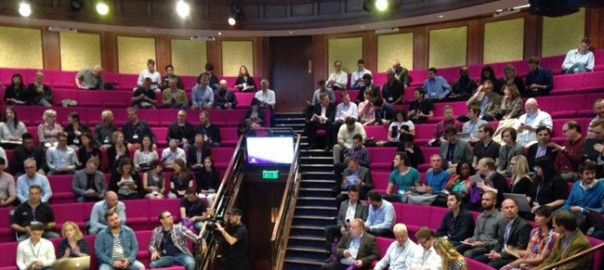You know the drill by now folks. Here’s my best reads from the last week or so. Enjoy and have a fantastic Christmas and New Year. See you all in 2015!
Bad community is worse than no community
“By coupling a format that encourages intimacy with a network design that encourages out-of-context amplification, Twitter has evolved into something fundamentally volatile. It’s fun, fast and powerful, but remains highly risky for anything approaching honest conversation, or even satire.”
Consumer-aware, context-aware
“Smart news organizations know that in 2015, the value of our attention will continue to eclipse the value of our clicks. The best way to harness attention in the digital ecosystem is to service the consumer’s needs rather than simply repackaging content to fit the form factor of her various devices. A deeply engaged consumer is easier to monetize. She is a good ambassador for the news organization. And, ostensibly, she’s a better informed citizen.”
The news mixtape
“If the rise of podcasts and newsletters has taught us anything this year, it’s that there’s value in consuming bundled content.“
The rise of the jacktivist
“…news outlets will have to do more than merely report what’s going on. Journalists will have the added responsibility of giving people a pathway to act, to improve their lives and the lives of others.
Again, I understand this may seem anathema to some, but people today need more than headlines and stories. They need more than data, visuals, and explanations. They need more than journalism. They need an empathy-driven service to improve their lives, their communities, and our world.”
16 reasons why this research will change how you look at news consumption | Online Journalism Blog
“The value news has in people’s everyday life seems to hinge less on the increasing technological, social and participatory affordances of the informative platform than on time- and place-dependent user needs …
“News wants and needs, place, moment of the day and especially the convenience of a particular news carrier appear to be defining factors in what people do with news. As Rosa (26) explained, she checks the news on her smartphone and her work computer during the day, snacks the news on her laptop and in the newspaper after work, and reads her newspaper’s weekend supplements on Saturday morning at home.”
(PS I loved the 16 consumption trends spotted here…)
- Reading
- Watching
- Viewing
- Listening
- Checking
- Snacking
- Scanning
- Monitoring
- Searching
- Clicking
- Linking
- Sharing
- Liking
- Recommending
- Commenting
- Voting
Andy Carvin launches social-media reporting team for First Look
“Because the idea of Reportedly is to have journalists or anchor/producers embedded in different social platforms and engaging directly with users there, the project doesn’t have a website yet, although it will be getting one. Carvin said that to begin with, the team will be using a Medium collection to talk about how the experiment is unfolding, and to brainstorm about the kind of journalism they want to do. But in the future, he hopes there will be a site that can act as a “central dashboard” where readers can see everything.”
The gender split in news consumption: A case of discovery?
“It could simply be, then, that the seeming disparity between the equal amount of women and men who have access to connected devices and the fact that men actually consume more news on those types of devices could be explained by the following statement: Women in the UK prefer to discover their news through social means, and certain types of digital content (that of BuzzFeed and Upworthy etc.) are simply more shareable than others.
Ultimately, the difference in the type of news content men and women consume could be as much about how they find news as what they are intrinsically interested in.”
The newsonomics of the newly quantified, gamified news reader
“The trick here is in inferring reader likes and dislikes, as in the Cosby story example. Says Frons: “Subject-based personalization limits serendipity — one of the main pleasures of social feeds in particular and the Internet in general…For content creators, I am not sure that slicing the report up into micro-individuated bundles is ever going to make business or product sense. But a little bit of personalization within a product can go a long way.”

